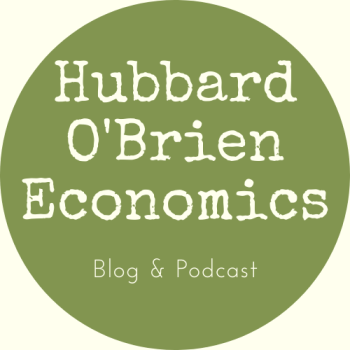Supports: Econ (Chapter 1, Section 1.3- in All Volumes)
Here’s the key point: To forecast the effects of a government policy, it’s important for economists to take into account how people will change their behavior in response to the policy.
In forecasting the effects of a government policy, economists take into account how people will respond to the policy. In general, when people’s circumstances change, including when the government enacts a new policy, people change how they act. It’s easy to fall into an error if you fail to take into account how people’s actions might change—their behavioral response—as their circumstances change. Let’s consider two examples.
First consider an example from the Covid-19 pandemic. In May 2020, the federal Centers for Disease Control and Prevention (CDC) noted that few people were contracting the disease as a result of touching surfaces contaminated by the virus and that most people became ill by breathing in the virus while near an infected person. Some media outlets interpreted the CDC’s announcement as meaning, in the words of one headline: “CDC Now Says Coronavirus Isn’t Easily Spread by Touching Surfaces.” But is this conclusion correct? Consider two scenarios:
Scenario 1: Despite the spread of the coronavirus, people and businesses don’t adjust their behavior. People are unconcerned if they touch a surface, such as a doorknob, that may contain the virus. After touching a surface, they don’t immediately wash their hands or use hand sanitizer. No one wears gloves. Businesses don’t make a special effort to clean surfaces.
Scenario 2: Most people react to the spread of the coronavirus by avoiding touching surfaces whenever they can. If they do touch a surface, they wash their hands or use hand sanitizer. Some people wear gloves. Businesses disinfect surfaces much more frequently than they did before the virus became widespread.
If Scenario 1 accurately described the situation in the United States in May 2020, we could reasonably draw the conclusion contained in the media headline we quoted: You are unlikely to catch Covid-19 by touching a contaminated surface. In fact, of course, Scenario 2 more accurately describes the situation in the United States at that time. As a result, the fact that few people caught the virus from touching a contaminated surface does not allow us to conclude that you are unlikely to catch Covid-19 that way because people adjusted their behavior to make that outcome less likely.
Now consider an economic example. Suppose that a city decides to tax colas and other sweetened beverages. If stores in the city are currently selling 100 million ounces of soda and the city imposes a tax of 2 cents per ounce, will it collect $2 million (= $0.02 per ounce × 100,000,000 ounces) in revenue from the tax per year? We can expect that because of the tax, stores will increase the prices they charge for soda. Those price increases will cause consumers to change their behavior. Some people will buy less soda and, if the city’s suburbs don’t also enact a tax, some people will drive to stores outside the city to buy their soda. As a result, sales of sweetened beverages in the city will fall below 100 million ounces and the city will collect less than $2 million per year from the tax.
In both these cases, we would draw an incorrect conclusion if we failed to take into account the behavioral response of people to changes in their circumstances, whether the change is from the arrival of a new disease or an increase in a tax. Economist sometimes call the error of failing to take into account the effect of behavioral responses to policy changes the Lucas critique, named after Nobel laureate Robert Lucas of the University of Chicago.
Question: An article in the Seattle Times published in late May 2020 noted that: “Half of new coronavirus infections in Washington [state] are now occurring in people under the age of 40….” Yet an opinion column in the New York Times published in March 2020 near the beginning of the pandemic noted that the coronavirus was disproportionately infecting older people. Is one of these accounts of which age group is most likely to be infected necessarily incorrect? Briefly explain.
For instructors that would like the solutions to these questions, please email your name, course number, and affiliation to christopher.dejohn@pearson.com and we’ll send along a solutions manual.
Sources: Sandi Doughton, “Half of Newly Diagnosed Coronavirus Cases in Washington Are in People under 40,” Seattle Times, May 28, 2020; and Louise Aronson, “‘Covid-19 Kills Only Old People.’ Only?” New York Times, March 22, 2020.
